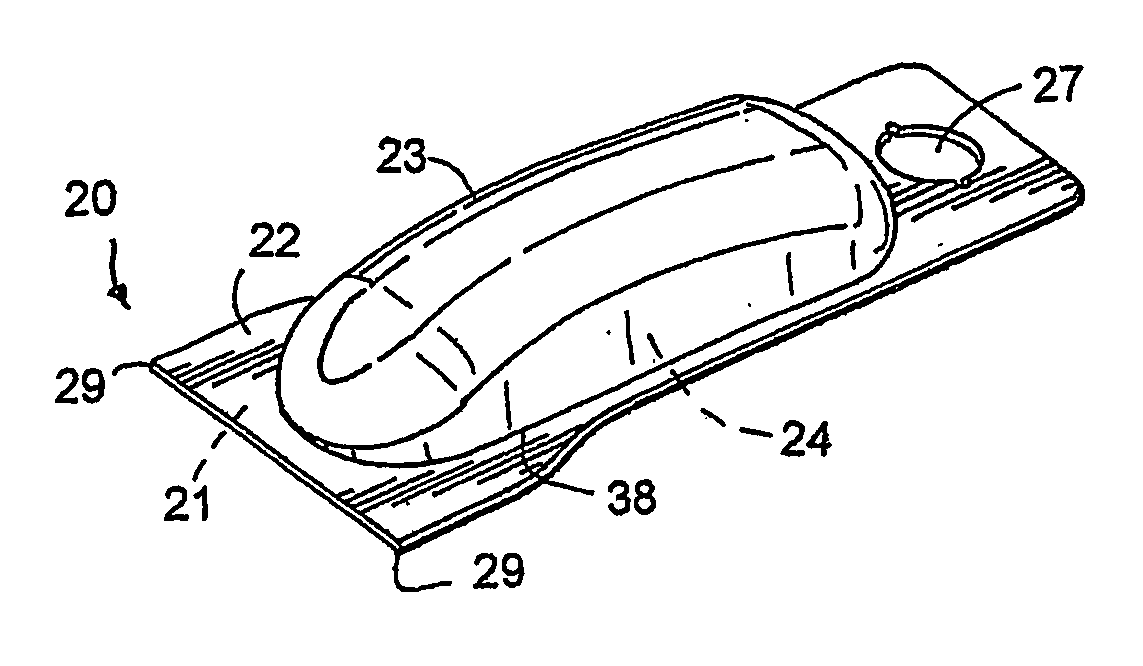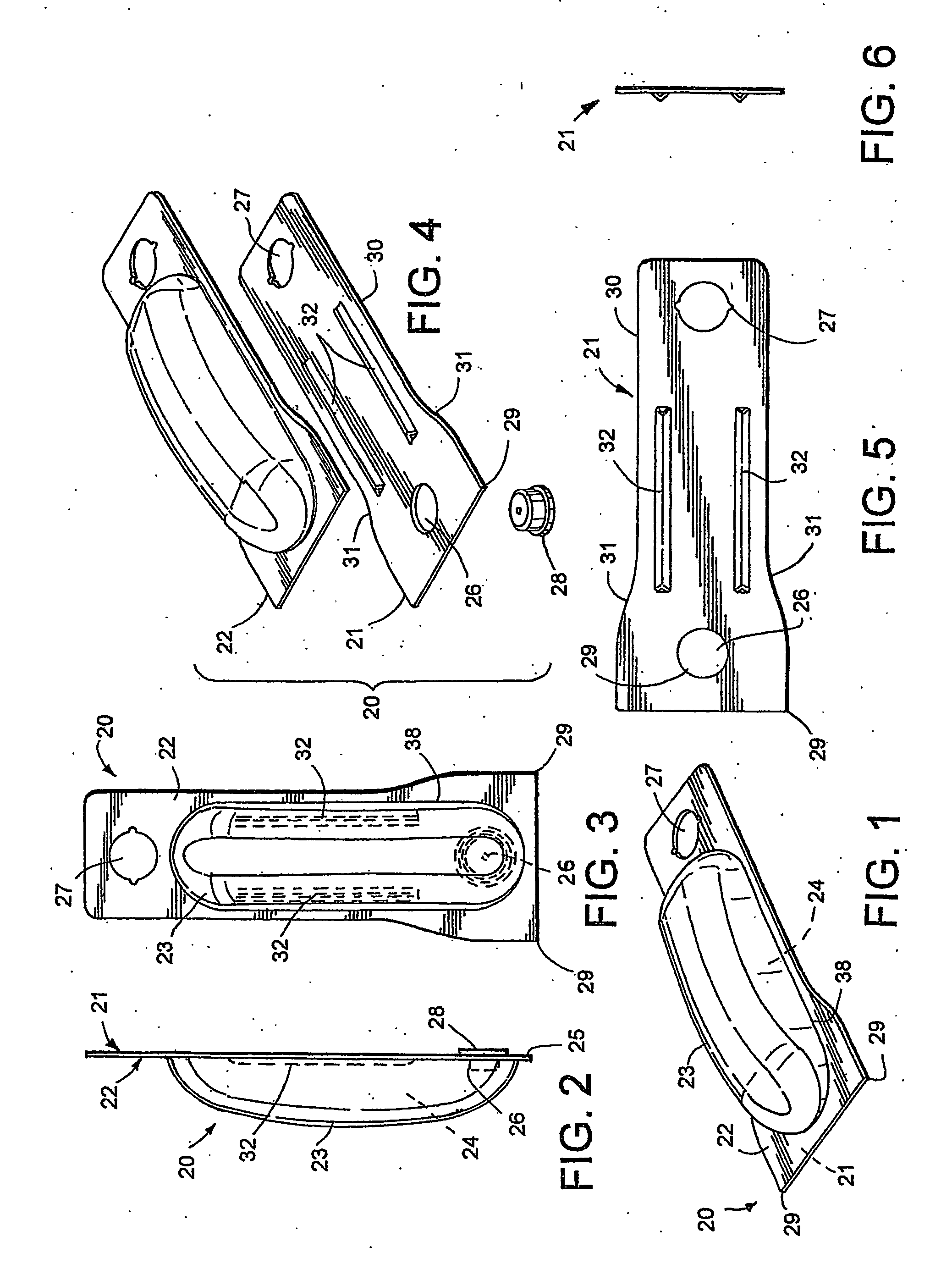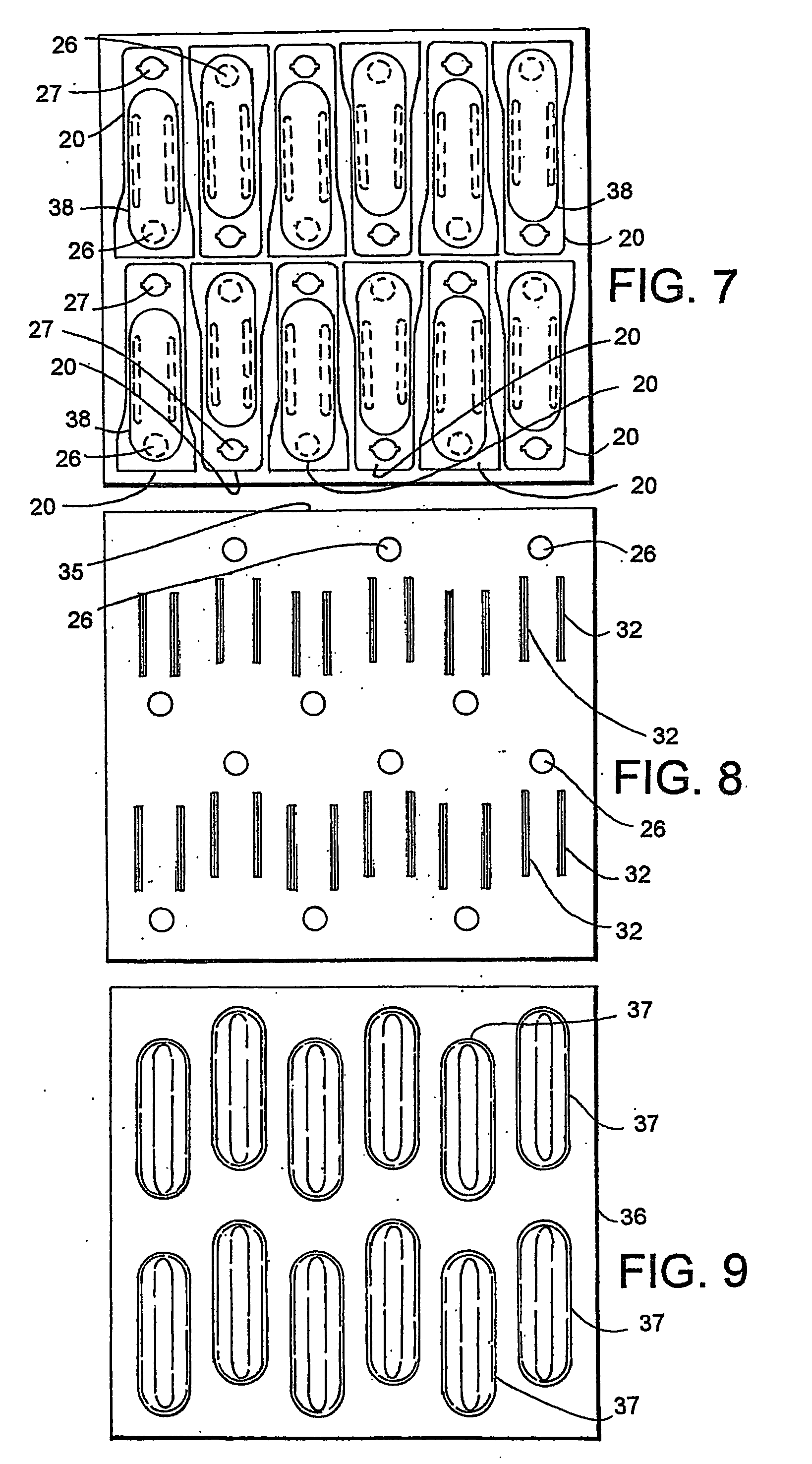Disposal of unused spackling is messy and wasteful.
At the same time, it is typically undesirable to put excess spackling material back into a tub because the excess spackling material can taint the whole tub with fuzz, hair,
dirt, and of course, mostly-dry spackling material.
When a tub runs low of material, such as at the end of a job, the material in the tub tends to dry out and / or get debris in it, such that it then contains mostly unusable spackling material, which ultimately ends up going into the trash can.
It is fair to say that the above
repair method is very often quite wasteful.
Spackling materials are especially difficult to deal with since they are more viscous and more prone to
drying and clumping than many creams and adhesives / caulking compounds.
Further, spackling materials (by design) tend to dry quickly and
skin over and / or form crusts or cake-like clumps that render the material difficult to apply.
Thus, spackling materials are notorious for not flowing well through long or narrow channels.
However, this property makes dispensing of spackling materials more difficult.
A problem is that the long narrow spouts require diluted spackling material so that the spackling material can be dispensed through the long narrow passageways of the spouts.
As a result, the diluted low-
viscosity spackling material doesn't work well on larger holes and cracks, since it sags and / or shrinks unacceptably upon
drying.
However, push-up tubes are expensive since they require uniquely shaped parts with tight tolerances that interact to provide the push-up action.
Also, the cap spreader of the tube is awkward to hold and is not shaped for use as a firm grip when spreading spackling material.
Further, material that is sucked back into the tube can be contaminated, leading to problems at a time when the
consumer expects to be able to reuse the product, causing
frustration of the worker / user.
This leads to substantial waste, since partially-filled collapsible tubes are discarded.
A serious problem with the Dap Patch Stick® product that was tested is that, as the spackling material is dispensed and used, the spackling material tends to become drier and therefore less cohesive.
Another source of
moisture loss is at the top where the “seal” is not bonded, but merely
lying on the spackling material.
Drier spackling material tends to crumble, lose its plastic nature, and not adhere properly to the wall or spreader cap.
The prior art that combined a spreader blade with a
material supply of paste that I, the inventor, investigated included one or more of the following negative features: 1) a narrow or long channel that was not well-suited for nor
usable for dispensing spackling or
adhesive paste; 2) an obstruction to the dispensing hole or dispensing area that impedes or prevents wiping the dispensing area clean for subsequent later use of the apparatus; 3) no plug or seal that adequately prevents material at the dispensing site from
drying out; 4) no docking location for any such plug, nor for convenient storage of a sealing plug so that it does not get lost while using the apparatus; 5) prior art uses a
cylindrical tube which requires or includes a long dispensing channel and which does not provide an ergonomic
handle; 6) no straight, smooth scraping edge with squared or relatively-sharp corners to facilitate application of the spackling material to concave edges and corners; 7) no resilient blade that does a good job of simulating a
putty-knife blade with proper memory and resiliency of the blade; and 8) prior art tends to be limited to a
single use only due to drying of spackling material around the dispensing location or due to
contamination (i.e. dust, debris,
insect remains, etc.) of spackling material sucked back or back-mixed with the spackling material in the apparatus.
However, small jobs can result in tremendous waste unless an effective low-cost dispenser is provided where wasted spackling material is minimized.
The solution of bonding prior to filling and then providing an air bleed hole to facilitate filling is believed to be totally unobvious to a person of ordinary skill, due to the logic of filling this type of article prior to bonding.
However, spackling and pastes potentially complicate the
bonding process by contaminating the bonding site.
Imperfect bonding leads to imperfections which are problematic given the sensitivity of the present spackling material to drying out and / or clumping (which problems are discovered only after considerable shelf time in a store or in a person's supply
closet).
Further, I suggest that it is unobvious to include an air bleed hole where the material is subject to drying problems.
 Login to View More
Login to View More 


